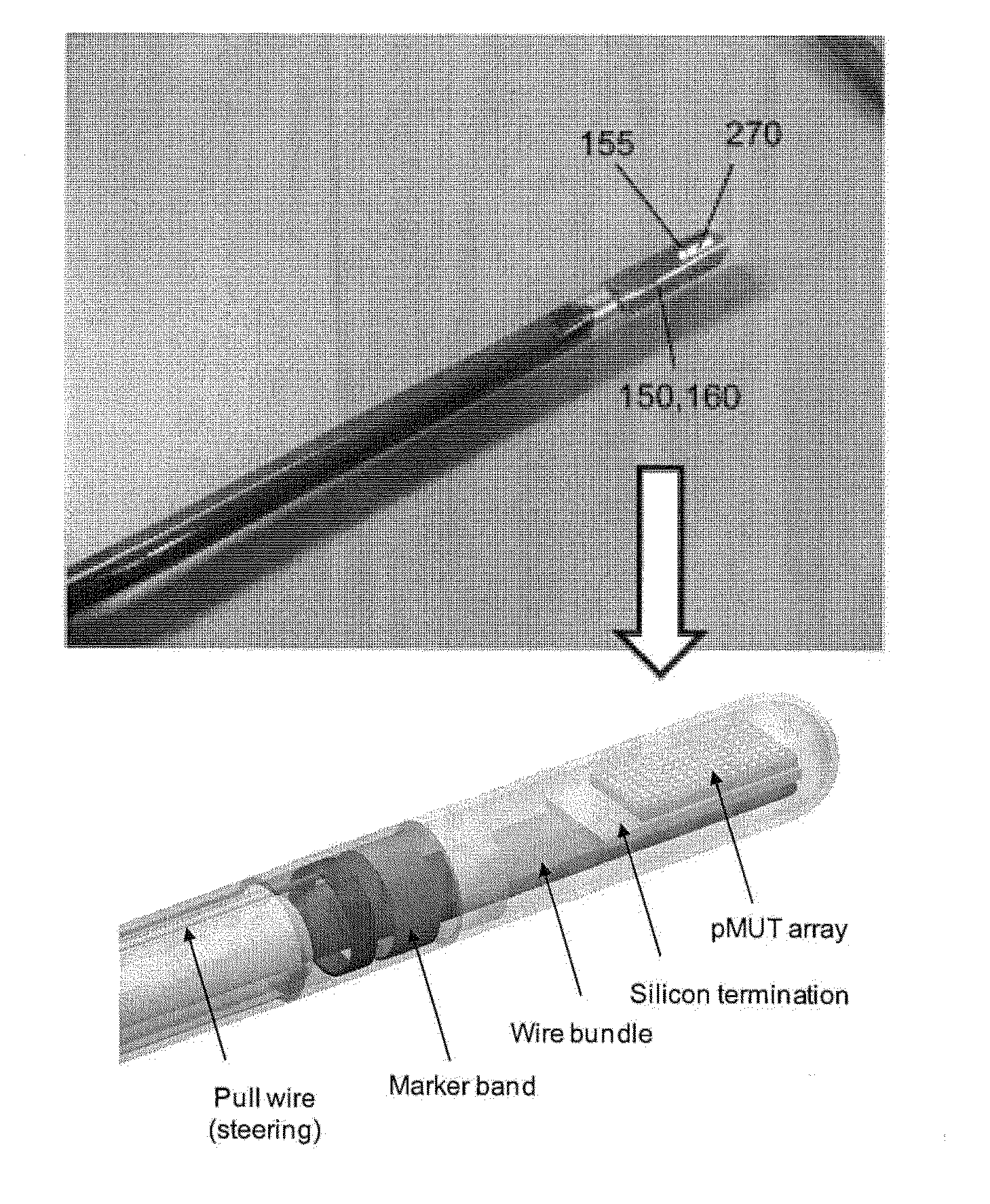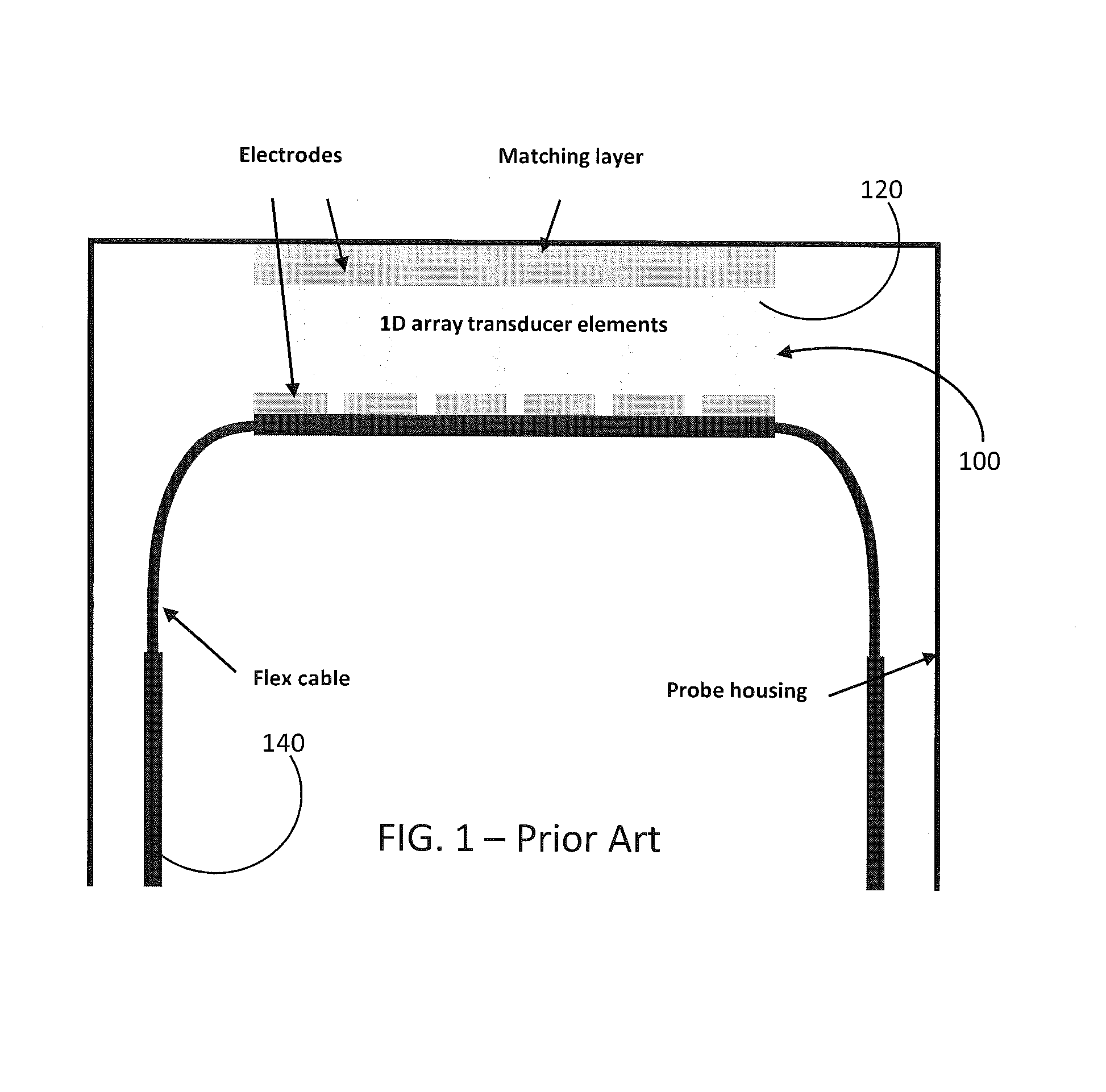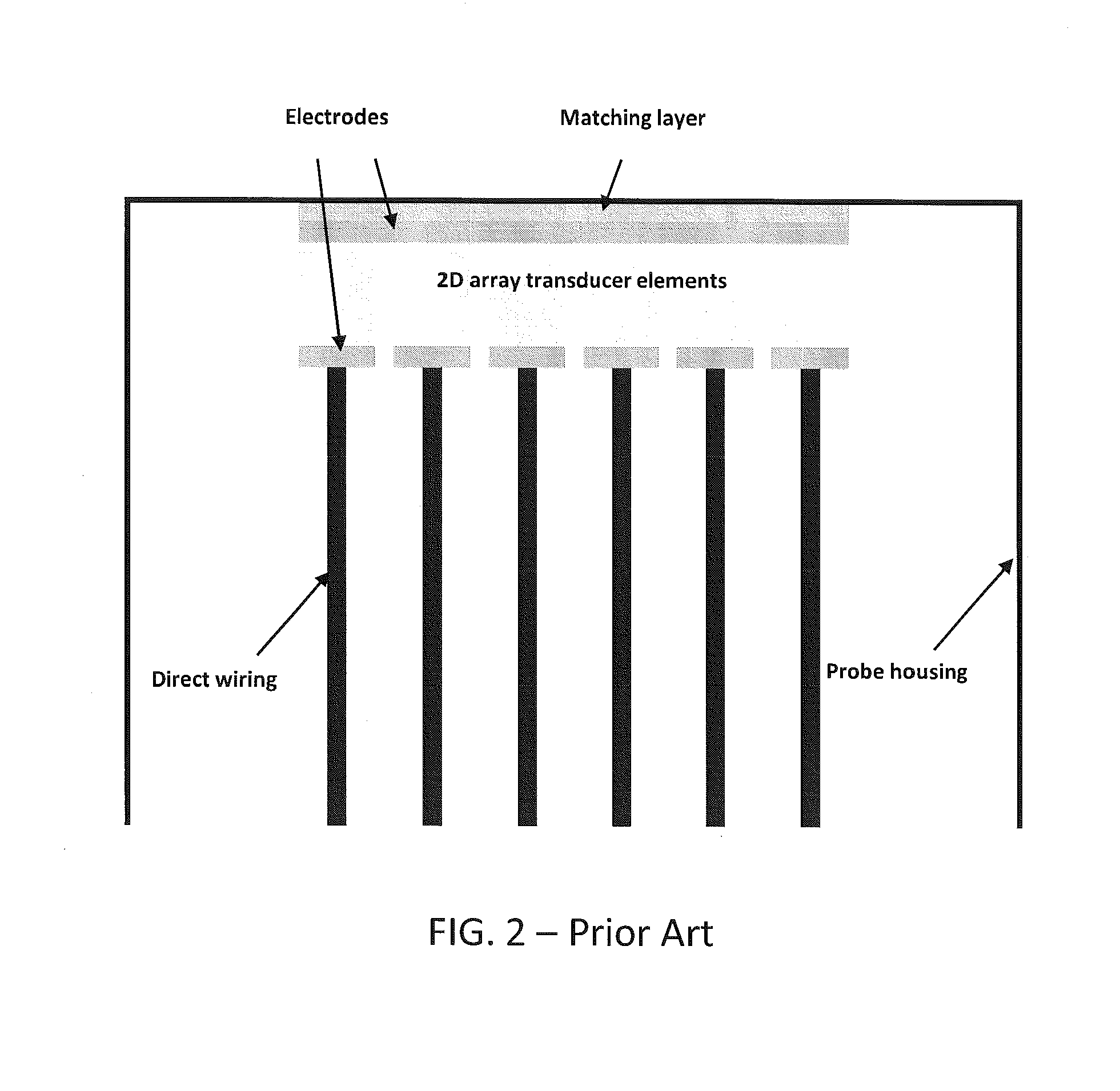Ultrasound device, and associated cable assembly
a technology of ultrasonic transducers and cables, applied in the field of ultrasonic transducers, can solve the problems of difficult signal interconnection with individual pmut devices, adversely affecting the diameter of catheters, and difficult implementation of arrangemen
- Summary
- Abstract
- Description
- Claims
- Application Information
AI Technical Summary
Benefits of technology
Problems solved by technology
Method used
Image
Examples
Embodiment Construction
[0046]The present disclosure now will be described more fully hereinafter with reference to the accompanying drawings, in which some, but not all aspects of the disclosure are shown. Indeed, the disclosure may be embodied in many different forms and should not be construed as limited to the aspects set forth herein; rather, these aspects are provided so that this disclosure will satisfy applicable legal requirements. Like numbers refer to like elements throughout.
[0047]Aspects of the present disclosure are generally applicable to ultrasonic transducers, though particular aspects are particularly directed to a piezoelectric micromachined ultrasound transducer (“pMUT”) having an air-backed cavity. More particularly, aspects of the present disclosure are directed to methods of forming an electrically-conductive connection between a pMUT device and, for example, an integrated circuit (“IC”) and / or corresponding connective elements, whereby individual signal and ground leads may extend p...
PUM
 Login to View More
Login to View More Abstract
Description
Claims
Application Information
 Login to View More
Login to View More - R&D
- Intellectual Property
- Life Sciences
- Materials
- Tech Scout
- Unparalleled Data Quality
- Higher Quality Content
- 60% Fewer Hallucinations
Browse by: Latest US Patents, China's latest patents, Technical Efficacy Thesaurus, Application Domain, Technology Topic, Popular Technical Reports.
© 2025 PatSnap. All rights reserved.Legal|Privacy policy|Modern Slavery Act Transparency Statement|Sitemap|About US| Contact US: help@patsnap.com



